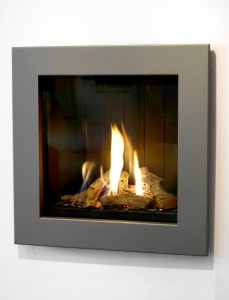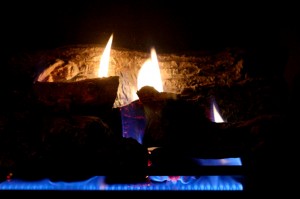 Anyone who has lived through a cold Ontario winter can appreciate the homey warmth and comfort provided by a gas fireplace. In addition to being a clean, efficient and economical way to boost your home’s main heat source, a gas fireplace requires far less attention and effort than a wood-fueled fireplace.
Anyone who has lived through a cold Ontario winter can appreciate the homey warmth and comfort provided by a gas fireplace. In addition to being a clean, efficient and economical way to boost your home’s main heat source, a gas fireplace requires far less attention and effort than a wood-fueled fireplace.
However, it’s important to schedule an annual gas fireplace maintenance appointment with your local ClimateCare professional. Neglected fireplaces can develop several potentially dangerous – and ultimately expensive – problems if not maintained on a regular schedule. Here are a few common problems that can develop.
Buildup
Dust, dirt and dead insects build up in the orifices and burner ports of your fireplace, causing it to burn inefficiently or not at all. Dirty or loose wiring connections can cause problems and worn gaskets can allow poisonous carbon monoxide to filter into your living area. Even ceramic logs can deteriorate over time, clogging vents and burner ports.
Unlike wood-burning fireplaces, black soot buildup is not a by-product of a healthy gas furnace, especially on the glass doors. If soot is visible on the doors, chances are good that the logs, interior of the firebox and the outside venting also contain buildup. A gas fireplace that produces soot needs immediate attention.
Wear and tear
Every piece of mechanical equipment in your home needs regular maintenance in order to operate at peak efficiency and your gas fireplace is no different. Components wear out, especially when operation alternates between periods of no use to high use in the course of a year.
Valves and gas connections can develop dangerous leaks, the thermocouple and thermopile need regular cleaning and inspection and the ceramic logs need cleaning and proper placement for the fireplace to function efficiently. Neglected gas fireplaces are susceptible to explosions and sudden fires if there are leaks or component malfunctions, resulting in serious injury or house fires.
Venting problems
 Birds, bats, squirrels and raccoons often choose chimneys for nesting or as warm havens. Nests, especially those built by squirrels, can completely block a chimney flue, causing serious venting problems. The bodies of diseased or trapped animals that die in your chimney will not only block ventilation, but will fill your home with an awful odor, especially if you unknowingly start a fire.
Birds, bats, squirrels and raccoons often choose chimneys for nesting or as warm havens. Nests, especially those built by squirrels, can completely block a chimney flue, causing serious venting problems. The bodies of diseased or trapped animals that die in your chimney will not only block ventilation, but will fill your home with an awful odor, especially if you unknowingly start a fire.
Newer fireplace models operate at such high efficiency levels that they extract the heat that used to go up the chimney and deliver it to your living space. While no one wants to waste heat, the chimney needs warm air to provide the draft that removes gases and moisture from the flue. If the flue temperature becomes too low, the water and gases become corrosive, which can cause the liner, mortar and even the brickwork to crumble and flake.
As a homeowner, you naturally want to ensure safe and efficient use of your fireplace as well as maximizing its service life – but you may not have the time or aptitude for doing it yourself. An annual service and repair plan will include the following maintenance steps:
- A 22-point gas fireplace maintenance checklist
- A complete inspection of all system components
- Inspection and adjustment of pilot light
- Clean and replace gas logs
- Inspect thermopile, thermocouple, fan, venting and thermostat
Contact your local ClimateCare member for gas fireplace maintenance and you will also receive a discount off regular labour rates if repairs are required. As part of the largest heating and cooling cooperative in Canada, ClimateCare members are fully qualified and professionally licensed. Whether your gas fireplace is new or older, your local Ontario HVAC professionals are ready to ensure your comfort.




